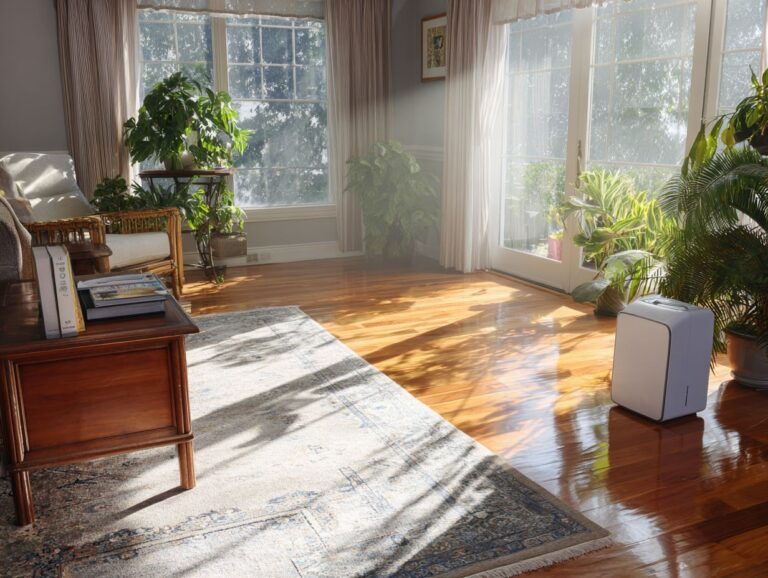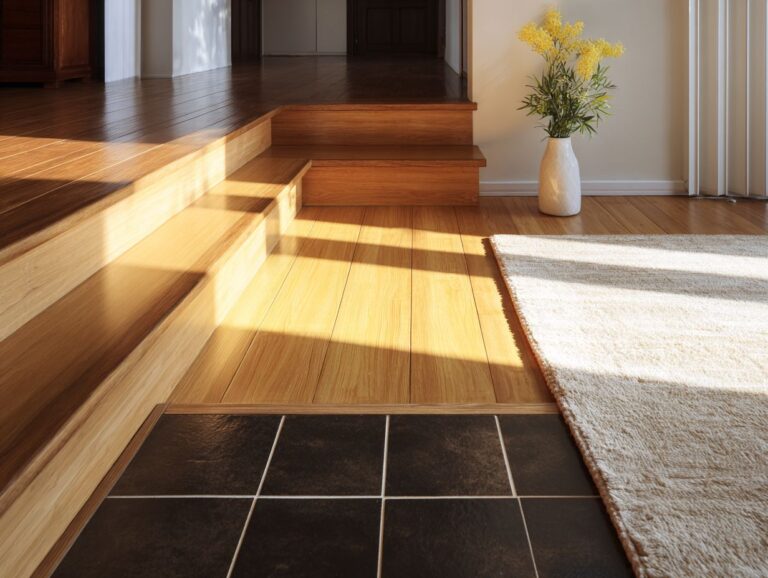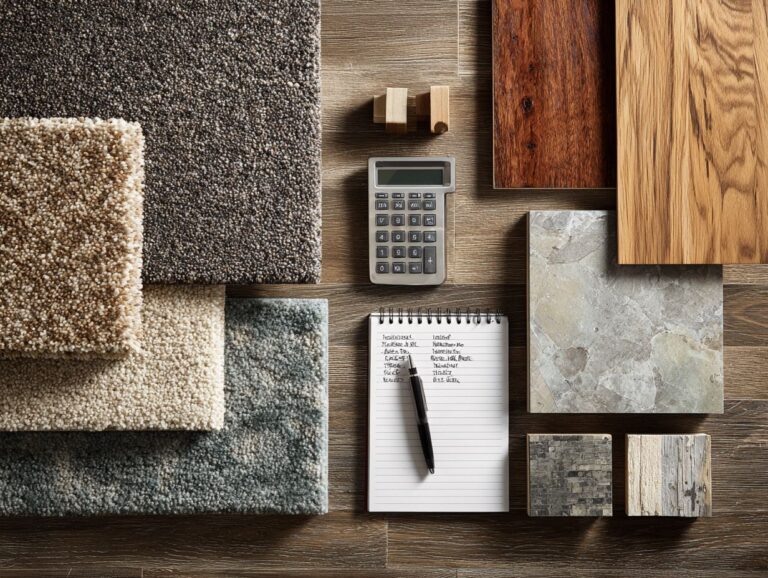Hardwood Floor Thickness Guide – 3/4″ vs 5/16″ vs 3/8″
Choosing the right hardwood floor thickness-whether solid hardwood or engineered wood-can significantly impact your home’s durability and aesthetic appeal. In this guide, flooring expert Rei Bayucca looks at the differences between 3/4″, 5/16″, and 3/8″ hardwood options, showing how each thickness affects performance. With information from EasiKlip, you’ll get essential details to make a well-informed decision for your flooring project. Find the best thickness for what you need!
Key Takeaways:
Contents
- Understanding Hardwood Floor Thickness
- Comparing 3/4″ Hardwood Flooring
- Exploring 5/16″ Hardwood Flooring
- Examining 3/8″ Hardwood Flooring
- Comparative Analysis of Thickness Options
- Wood Flooring Thickness Options
- Frequently Asked Questions
- What is the difference between 3/4″ and 5/16″ hardwood floor thickness?
- What is the advantage of using 3/4″ hardwood floors?
- Is 5/16″ hardwood floor thickness suitable for all types of subfloors?
- What are the benefits of using 5/16″ hardwood floor thickness?
- Can I mix and match hardwood floor thicknesses in my home?
- What is the difference between 3/8″ and 3/4″ hardwood floor thickness?
Importance of Thickness in Hardwood Floors
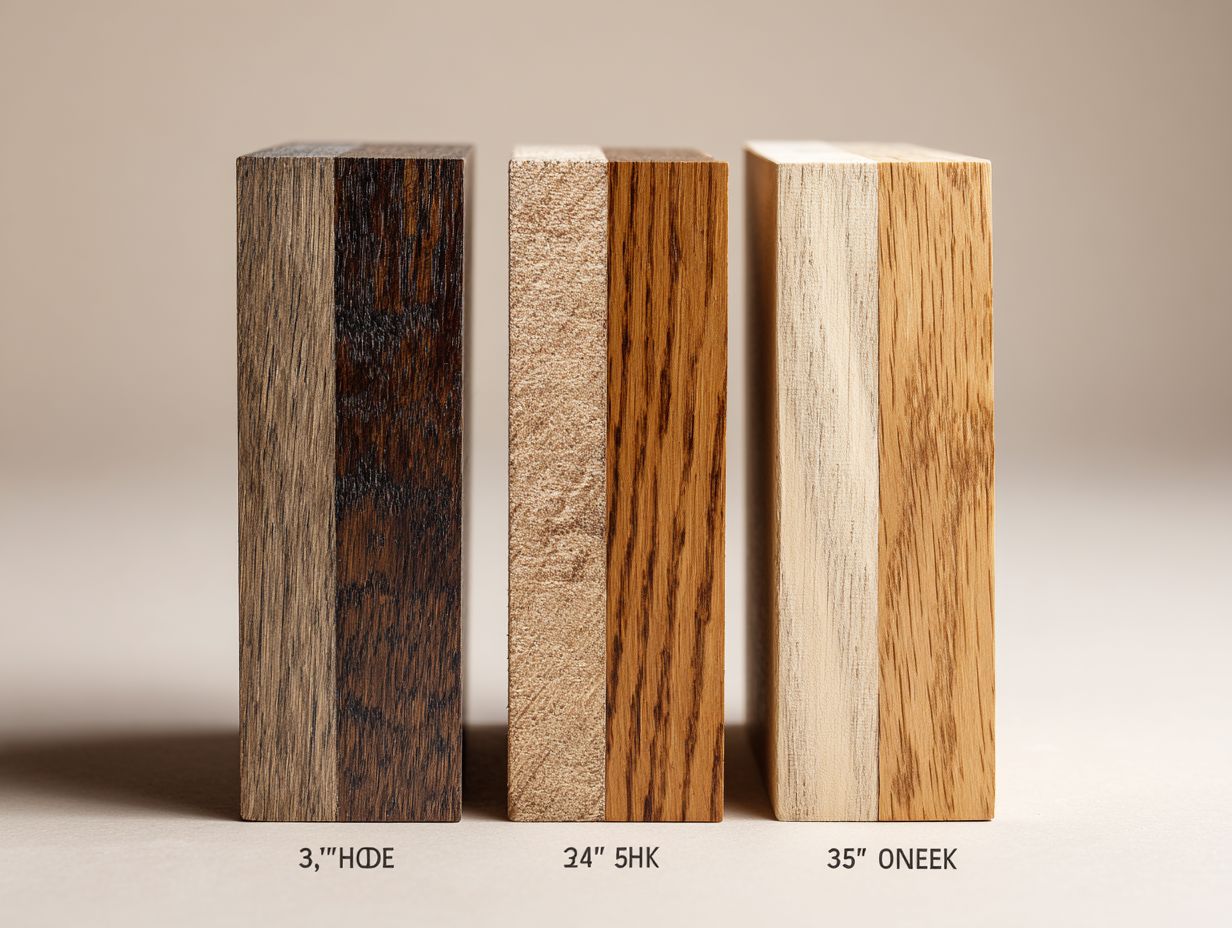
The thickness of hardwood floors influences their durability and strength, determining how much foot traffic they can withstand and how often they can be refinished.
Thicker boards, typically 3/4 inch compared to the standard 1/2 inch, can withstand significantly higher foot traffic, lasting up to 25% longer under such conditions.
The extra thickness makes the structure stronger, which lowers the risk of warping and denting. A strong 3/4 inch oak board works well for high-traffic places like hallways or living rooms.
Thicker boards can be sanded and refinished multiple times, prolonging their life and maintaining aesthetic appeal. Investing in quality, thicker hardwood may have a higher upfront cost, but it pays off in longevity and durability.
Overview of Common Thickness Options
Common thickness options for hardwood flooring include 3/4″, 5/16″, and 3/8″, each catering to different needs and preferences.
The 3/4″ thickness is the gold standard for high-traffic areas, providing durability and a solid feel underfoot. In contrast, the 5/16″ option is lighter and ideal for retrofits or over existing floors, minimizing height differences.
The 3/8″ thickness serves as a budget-friendly choice, suitable for residential settings or less frequented spaces.
When choosing the best option, think about how you will install it-using nails for 3/4″ or glue for thinner types-and also consider the conditions in your home to make sure it works well and lasts long. For a deeper understanding of the various types and species of hardwood flooring, directly explore our comprehensive guide.
Understanding Hardwood Floor Thickness
Knowing the thickness of hardwood floors is important for choosing flooring that looks good and works well. For a comprehensive understanding, our Complete Guide to Hardwood Flooring Types and Species offers valuable insights.
Definition of Hardwood Floor Thickness
Hardwood floor thickness is the distance from the top to the bottom of the board, usually between 3/8 inch and 3/4 inch.
The thickness affects both how long the board will last and how well it works for different installation methods.
For example, 3/8″ boards are often used for floating floors, making them easier to install over existing floors. However, 3/4″ boards are more stable and can be sanded and refinished multiple times.
Homeowners should think about their subfloor type: thicker boards need a solid base, while thinner ones can be more flexible.
Manufacturers typically recommend a minimum 1/2″ thickness for nail-down installations when using plywood underlayment.
How Thickness Affects Durability
Thicker hardwood flooring is more durable and can last up to 20 years longer than thinner types.
This long-lasting nature comes from many reasons.
For example, a 3/4″ solid hardwood can withstand heavy foot traffic and remain strong over time, making it ideal for busy households. Compare that to a 1/2″ engineered wood, which may show signs of wear or damage within a decade in similar conditions.
Thicker flooring is generally easier to refinish, allowing you to restore its original beauty multiple times without compromising structural integrity. This improves appearance and helps prevent moisture damage, which makes thicker options suitable for lasting use.
Impact on Installation Methods
The thickness of hardwood flooring directly influences the installation methods employed, including nail-down, glue-down, or floating installation.
For new builds, opt for a nail-down method using 3/4″ thick planks, securing them directly to the subfloor for stability.
In existing homes with moisture concerns, a 5/16″ glue-down installation offers excellent adherence while mitigating potential gaps.
For versatility, choose 3/8″ thick planks for floating installations, which allow expansion and contraction with changes in humidity. If you’re weighing options between different types of hardwood, our comparison of engineered vs solid hardwood can guide your decision based on specific needs.
Always check the room’s moisture and foot traffic before choosing how to install the flooring for durability and good looks.
Comparing 3/4″ Hardwood Flooring
3/4″ hardwood flooring is widely seen as the top choice, providing specific benefits and some factors that potential buyers should consider.
Advantages of 3/4″ Thickness
The primary advantages of 3/4″ hardwood flooring include its exceptional durability, refinishing capabilities, and suitability for high-traffic areas.
One of the standout features of 3/4″ hardwood flooring is its ability to withstand wear and tear. It can be refinished up to ten times, allowing you to refresh its appearance over the years without needing a full replacement.
For instance, in busy households or commercial spaces, this flooring maintains its integrity and looks, even under heavy foot traffic. Applying a top-grade finish like water-based polyurethanes can make the surface more durable, offering protection against scratches and stains for a longer time.
Disadvantages of 3/4″ Thickness
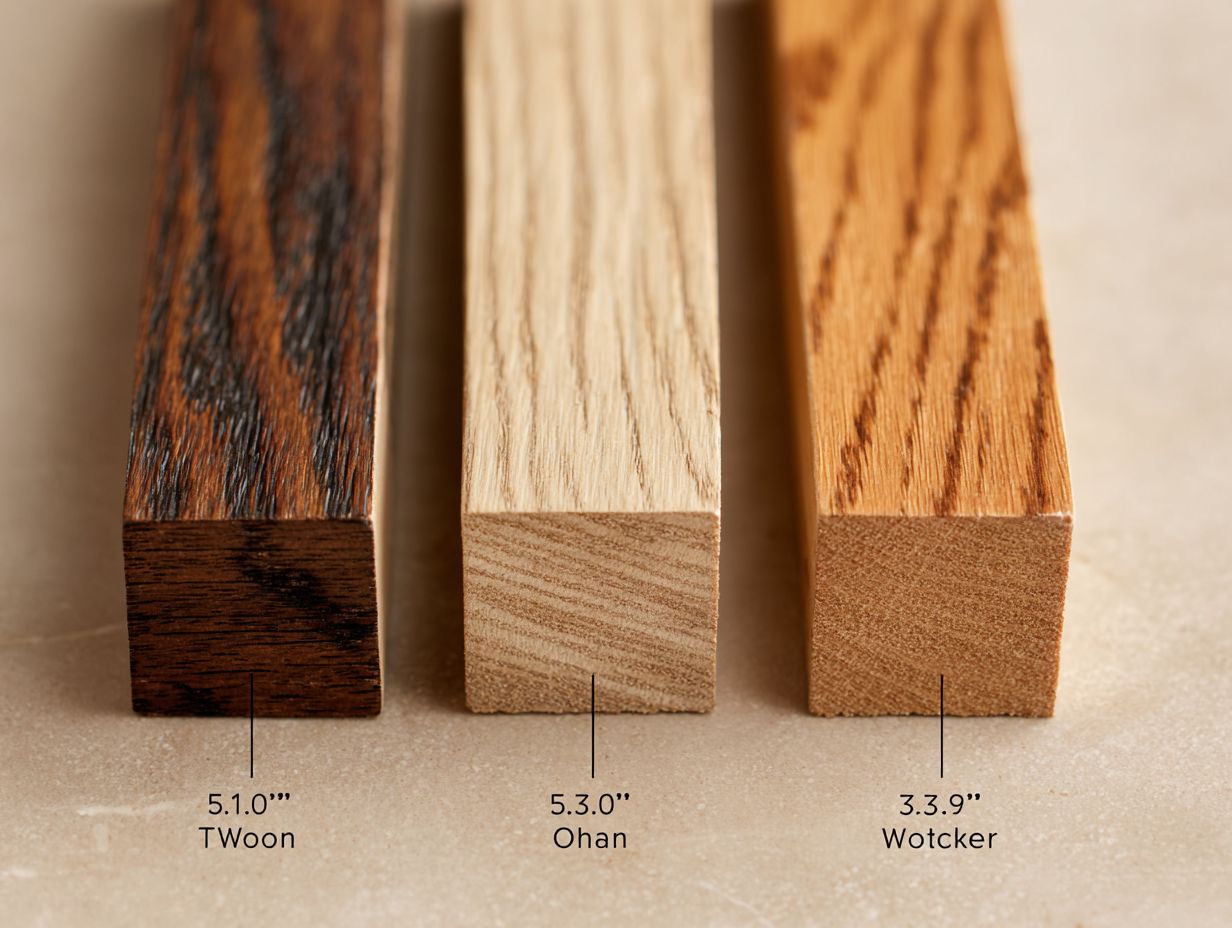
While 3/4″ hardwood flooring has benefits, it can be more expensive and might cause disturbances in the home when being installed.
These challenges often lead homeowners to consider their budget and logistics carefully. Installation typically costs between $5 to $10 per square foot, depending on the complexity and the type of hardwood selected.
The weight of the flooring may necessitate a suitable subfloor, which can further increase expenses. To reduce interruptions, plan the installation when the household is quieter, like during holidays.
Design software lets you visualize the space beforehand, simplifying decision-making.
Ideal Applications for 3/4″ Flooring
3/4″ hardwood flooring is ideal for residential areas, commercial spaces, and homes with underfloor heating due to its structural integrity and durability.
This thickness provides excellent stability, ideal for busy places such as living rooms and hallways where durability matters.
For example, in a busy office, 3/4″ hardwood looks good and is durable, often lasting for many years with the right maintenance.
Homes with underfloor heating benefit from this thickness because it distributes heat evenly, making them more comfortable.
Successful installations, like those in upscale Atlantic City condos, show how this flooring changes spaces and remains durable over time.
Exploring 5/16″ Hardwood Flooring
5/16″ hardwood flooring is a practical option, offering a good mix of cost and performance for different uses.
Advantages of 5/16″ Thickness
The main advantages of 5/16″ hardwood flooring include its cost-effectiveness, ease of installation, and suitability for retrofitting existing homes.
Typically priced between $3 and $7 per square foot, 5/16″ hardwood is a budget-friendly option for homeowners.
Its thin design reduces the need for subfloor work, which makes it perfect for renovations.
For instance, if you’re updating a room with existing tile, 5/16″ flooring can be installed directly over it with minimal hassle.
This thickness is particularly beneficial in places such as basements or upper floors, where weight matters significantly.
It balances affordability and practicality, accommodating various installation scenarios seamlessly.
Disadvantages of 5/16″ Thickness
5/16″ hardwood flooring has limitations, particularly regarding its longevity and refinishing capabilities compared to thicker options.
Thicker hardwood floors, such as those that are 3/4″ and 5/8″, are stronger and can withstand more walking, making them suitable for high-traffic areas. They can be refinished multiple times, extending their lifespan significantly.
For instance, a 3/4″ solid hardwood can be refinished 4-6 times, while 5/16″ typically allows for just 1-2 refinishing jobs. If you choose 5/16 use a strong finish such as polyurethane to make it last longer.
Think about how many people will walk on it and how much you want to spend when deciding how thick it should be.
Best Uses for 5/16″ Flooring
Best suited for light traffic areas, 5/16″ hardwood flooring excels in bedrooms, guest rooms, and other low-traffic zones.
This thickness provides a balance of sturdiness and aesthetics while being easier to install. For instance, consider using engineered hardwood options, which can withstand moisture better than solid wood-great for basements.
Tools like a circular saw for cutting and a tapping block for installation make the process smoother.
Let the flooring sit in the room for at least 48 hours before you start installation to get used to the room’s conditions. This treatment prevents warping and helps your flooring stay attractive and durable for many years.
Examining 3/8″ Hardwood Flooring
3/8″ hardwood flooring provides a budget-friendly option with decent durability for homeowners.
Advantages of 3/8″ Thickness
The advantages of 3/8″ hardwood flooring include its lightweight nature, which simplifies installation, and its cost-efficient pricing.
Typically priced around $2 to $5 per square foot, this thickness is an attractive option for DIY enthusiasts. The slim design makes it easy to hold and move, which is helpful for tasks around the house.
When laid correctly, 3/8″ hardwood provides excellent durability and resistance to wear. To install, use a flooring nailer or glue-down method, ensuring you acclimate the planks in the installation area for at least 48 hours to minimize expansion and contraction issues.
Disadvantages of 3/8″ Thickness
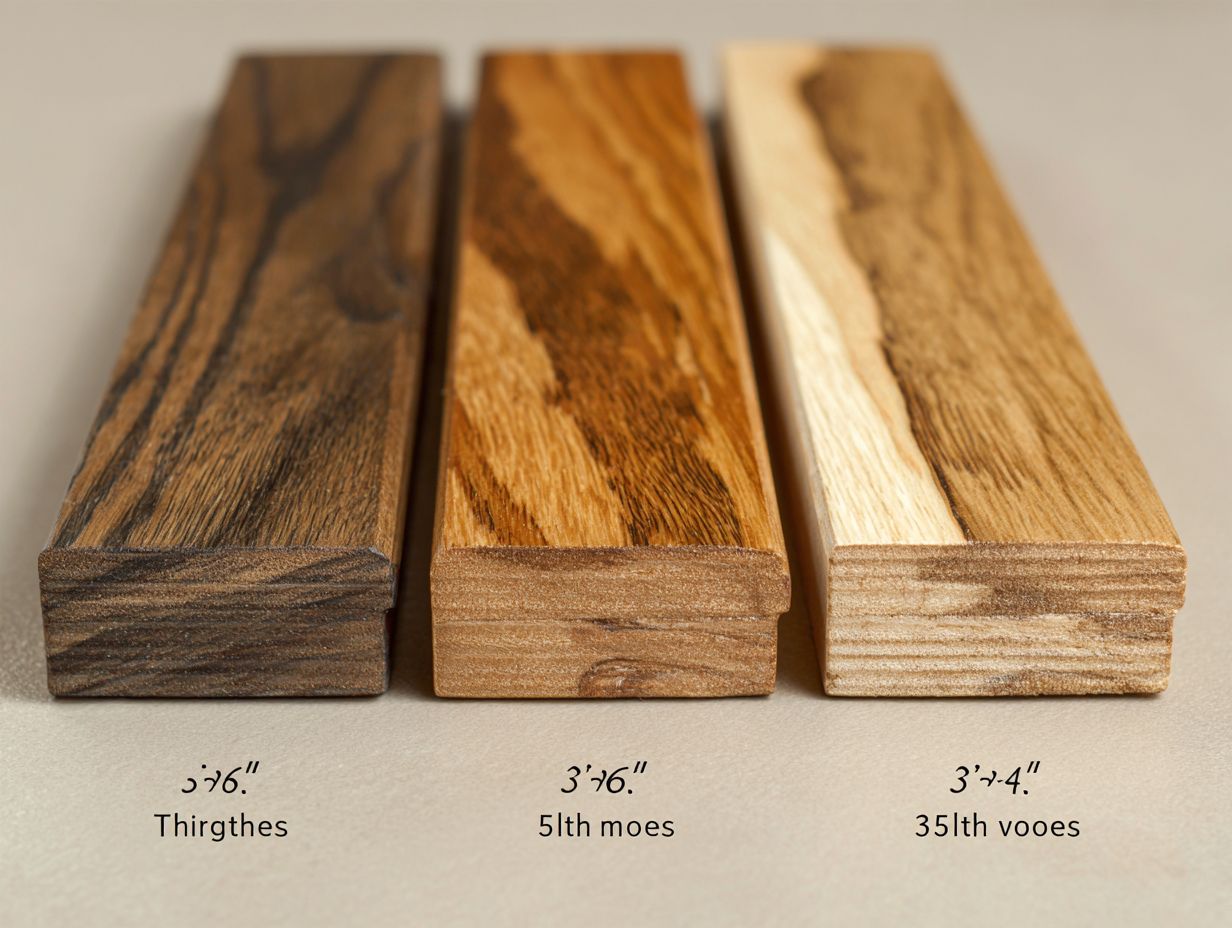
Despite its advantages, 3/8″ hardwood flooring has drawbacks regarding durability and limited refinishing options.
One main problem is that it can easily get dents and scratches, which makes it not the best choice for busy spots like entryways or living rooms.
After installation, homeowners should consider using protective pads under furniture and avoiding stiletto heels to prevent damage.
While 3/8″ hardwood can typically be refinished only once, this limitation can be problematic in households with pets or children. Choosing a more durable flooring option, such as engineered hardwood or laminate, may provide better long-term performance in these environments.
Recommended Situations for 3/8″ Flooring
3/8″ hardwood flooring is recommended for use in areas like basements or as an overlay in existing installations due to its lightweight and flexible nature.
This thickness is particularly advantageous for homeowners looking to remodel or retrofit spaces. For instance, when installing in a basement, the lower weight eases stress on beams, making it a good choice for humid spaces.
3/8″ flooring can seamlessly cover existing planks, saving costs on removal and disposal. Projects like a family room renovation or a hallway update often benefit from this choice, allowing for easier handling and quicker installation. Its versatility makes it a strong contender for various home improvement tasks.
Comparative Analysis of Thickness Options
Comparing the thickness choices for hardwood flooring helps people choose wisely by considering price, effectiveness, and how long it will last.
Wood Flooring Thickness Options
Wood Flooring Thickness Options
Wood Flooring Thickness: Solid Hardwood Thickness
Wood Flooring Thickness: Engineered Hardwood Thickness
The Wood Flooring Thickness Options Data offers a detailed view of the various thicknesses for solid and engineered hardwood flooring, showing why it is important to pick the right thickness for durability, installation, and appearance.
Solid Hardwood Thickness ranges from a minimum of 15.0 mm to a maximum of 20.0 mm, with the standard thickness at 19.0 mm. Solid hardwood is prized for its durability and ability to be sanded and refinished multiple times. The range of thicknesses allows homeowners and builders to select options based on the specific needs of the space, such as expected wear and maintenance.
- Engineered Hardwood Thickness: This type offers more variety, with the total thickness ranging from 10.0 mm to 22.0 mm. The wear layer, which is essential for longevity and the ability to refinish the floor, varies from 2.0 mm to 6.0 mm. Engineered hardwood looks like solid wood but is more stable because of its layered structure. This makes it suitable for places where temperature and humidity change.
Picking the correct thickness is very important. Solid hardwood with thicker options can be refinished more times, while thicker engineered wood options provide better strength and resistance to wear. The wear layer in engineered flooring is particularly important for longevity and the possibility of refinishing, affecting how long the floor retains its appearance.
Ultimately, the Wood Flooring Thickness Options Highlight the importance of choosing the right thickness for a project based on needs, including how many people will walk on it, weather conditions, and how it looks. Choosing between solid and engineered hardwood requires knowing the thickness options to select long-lasting flooring.
Cost Considerations
Cost considerations for hardwood flooring vary significantly, with prices typically ranging from $2 to $10 per square foot based on thickness and wood species.
For instance, 3/4″ thick boards generally cost between $5 and $10 per square foot, while 5/16″ boards can start as low as $2 but may reach up to $4. In contrast, 3/8″ boards often fall in the $3 to $6 range.
To find the best deal, suppliers like Vintage & Specialty Wood or Home Depot can provide quotes, and comparing local prices is advisable.
When budgeting, don’t forget to include installation costs, which can add another $2 to $5 per square foot.
Performance in Different Environments
The performance of hardwood flooring can vary greatly depending on environmental factors such as humidity, temperature changes, and foot traffic levels.
For instance, using 3/4″ thick hardwood is ideal for high-traffic areas like living rooms because of its durability.
In contrast, a 3/8″ thickness works well in moisture-prone areas, such as basements, where its lighter weight allows for better moisture management.
Think about using engineered hardwood. It deals with temperature and moisture changes effectively, staying straight and reliable in places with tough weather.
Picking the correct thickness according to where it will be used guarantees it will last longer and work well.
Maintenance and Longevity
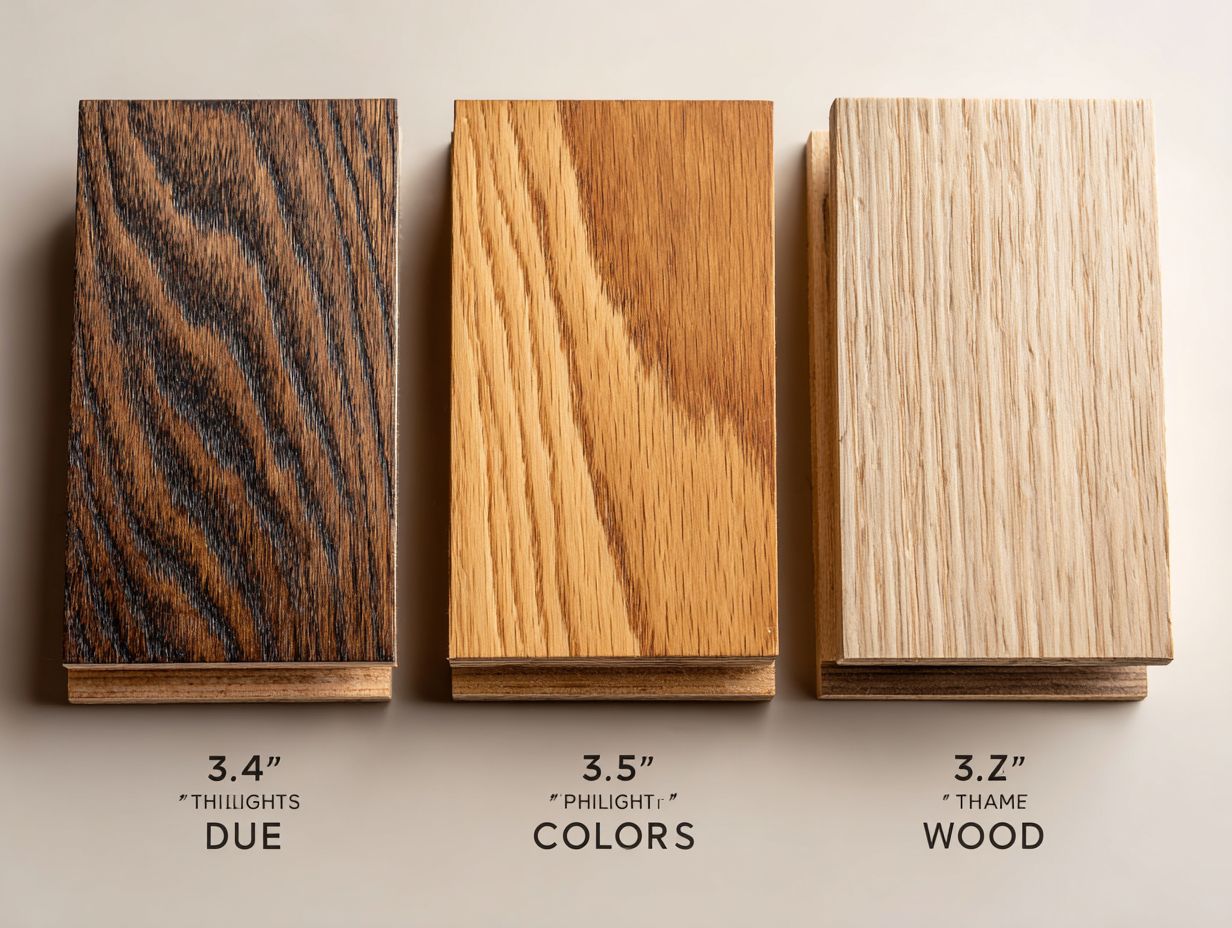
Maintenance practices and longevity expectations differ among hardwood flooring thicknesses, influencing long-term care strategies.
Hardwood floors that are at least 3/4 inch thick can be sanded and refinished every 10 to 15 years due to their thick surface layer. However, 1/2 inch options might need this upkeep every 7 to 10 years.
To maximize longevity, regularly sweep or vacuum to remove dirt, and clean with a hardwood-specific solution bi-weekly.
Consider placing area rugs in high-traffic zones and using floor protectors under furniture to prevent scratches.
Implementing these strategies can significantly extend the life of your chosen flooring, regardless of its thickness.
Final Recommendations on Thickness Selection
For optimal performance, 3/4″ hardwood flooring is recommended for high-traffic areas, while 5/16″ or 3/8″ options are suitable for low-traffic zones.
In high-traffic areas, consider durable hardwoods like oak or maple, known for their resilience. Use a good finish like polyurethane to make them last longer.
In low-traffic zones, softer woods like pine can work well, as they are lighter on the feet and offer a cozy aesthetic. It’s wise to invest in area rugs to protect these surfaces and add warmth.
Regular care, such as sweeping and sometimes refinishing, keeps the floors looking clean and makes sure your choice fits the area and brings long-term worth to your home.
Frequently Asked Questions
What is the difference between 3/4″ and 5/16″ hardwood floor thickness?
The main difference between 3/4″ and 5/16″ hardwood floor thickness is the overall durability and stability of the flooring. 3/4″ hardwood floors are thicker, which makes them more long-lasting and sturdy. This makes them a common choice for areas with a lot of foot traffic and homes with busy families. Hardwood floors with a thickness of 5/16″ are thinner and cost less, making them a good choice for areas with little foot traffic and for homeowners looking to save money.
What is the advantage of using 3/4″ hardwood floors?
3/4″ hardwood floors are strong and stable, which helps prevent them from warping, buckling, or squeaking. They last longer and can handle lots of people walking on them, which makes them a good choice for homes with pets or children. 3/4″ hardwood floors increase a home’s value and provide better sound and temperature insulation.
Is 5/16″ hardwood floor thickness suitable for all types of subfloors?
It is recommended to use a 5/16″ hardwood floor thickness for a plywood subfloor or a wood frame structure. This thickness is not suitable for concrete or uneven subfloors, as they may cause the floors to feel uneven or have hollow spots. It is best to consult with a flooring professional to determine the right thickness for your subfloor.
What are the benefits of using 5/16″ hardwood floor thickness?
The main benefit of using 5/16″ hardwood floors is that they are thinner and more affordable. They are also easier to install and can be sanded and refinished multiple times, just like their 3/4″ counterparts. They are a great option for homeowners on a budget or for adding a touch of elegance to low-traffic areas.
Can I mix and match hardwood floor thicknesses in my home?
It is not recommended to mix and match hardwood floor thicknesses in the same home. The different thicknesses may have different expansion and contraction rates, which can cause gaps, unevenness, and other issues. It is best to choose one uniform thickness for your entire home for best results.
What is the difference between 3/8″ and 3/4″ hardwood floor thickness?
The main difference between 3/8″ and 3/4″ hardwood floor thickness is the level of durability and stability. 3/4″ hardwood floors are thicker and last longer, making them a better choice for areas with a lot of foot traffic. 3/8″ hardwood floors are thinner and cost less, making them a suitable choice for areas with less foot traffic. It is important to carefully consider your needs and the location of your floors before choosing a thickness.
